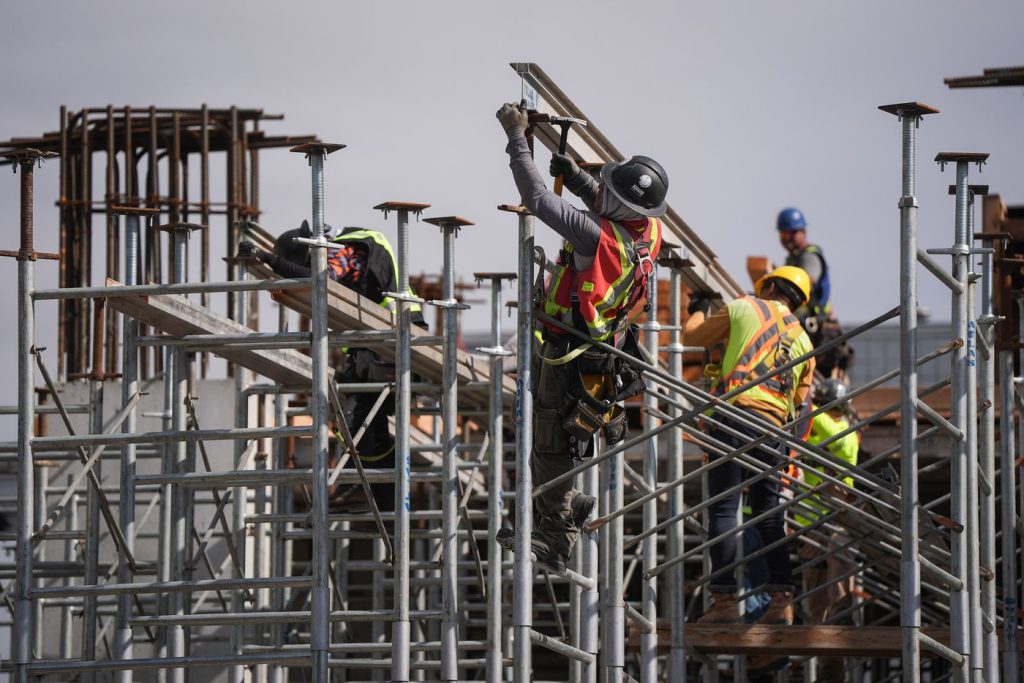As tariff challenges emerged from the United States earlier this year, various industries in Canada, particularly the home building sector, found themselves grappling with uncertainty. The increased costs due to blanket tariffs and targeted material-specific levies created additional hurdles for stakeholders who were already acutely aware of the pressing need to enhance housing supply and address the growing housing affordability gap in Canada.
The heightened tariffs potentially slowed the pace of construction as companies had to adapt to shifting supply chains, resulting in key construction materials becoming more expensive. Cheryl Shindruk, executive vice-president of Geranium Homes, a residential developer based in southern Ontario, acknowledged that while it is challenging to quantify the exact financial impact, it has undoubtedly affected business confidence and the timely availability of necessary materials.
In the six months since U.S. President Donald Trump regained the presidency, professionals in the home construction sector have reported persistent unpredictability regarding the costs and timelines associated with procuring essential materials. Geranium Homes has adjusted its supply chain, increasingly sourcing materials locally in Canada, such as brick and stone, while considering alternatives from other countries to avoid tariffs on American steel. They now source steel from nations including South Korea, Portugal, and China, although some materials, like specific components for layered glass windows, continue to be sourced from the U.S. due to patents, forcing the company to absorb the additional costs.
Kevin Lee, CEO of the Canadian Home Builders’ Association, highlighted that products such as appliances, interior doors, and carpeting have been significantly impacted by the ongoing trade conflict. Builders are attempting to find substitutes for traditional materials, with some opting for alternatives like vinyl plank instead of carpet. Furthermore, many builders have begun stockpiling materials to mitigate the risk of future shortages, leading to increased overhead costs as they need to store these materials rather than acquiring them on an as-needed basis.
In an earlier assessment, Altree Developments, a Greater Toronto Area-based company, had predicted a budgetary impact ranging from three to five percent due to the trade war. Although this estimate has decreased as Canadian materials became more readily available than expected, president and CEO Zev Mandelbaum noted that the unpredictable nature of tariff announcements has made long-term planning exceedingly difficult. The firm has observed a significant decline in revenue over the past six months, primarily due to economic instability that has dampened buyer demand for housing.
The Canada Mortgage and Housing Corporation (CMHC) released a housing forecast in February, stating that the trade conflict between Canada and the U.S., alongside lowered immigration targets, would likely hinder economic growth and restrict housing activity. The national housing agency anticipated a slowdown in housing starts over the coming three years, despite still exceeding the 10-year average. As of June, year-to-date housing starts totaled 114,411 across regions with populations of at least 10,000, marking a four percent increase compared to the first half of 2024. However, regional trends indicate that provinces with industries more vulnerable to tariffs are experiencing a slowdown, as evidenced by Ontario's 26 percent year-over-year decline in housing starts and an eight percent drop in British Columbia.
In Ontario, five of the ten cities most affected by tariffs have also reported increases in mortgage arrears during the spring. CMHC chief economist Mathieu Laberge explained that economic factors linked to the trade war likely caused layoffs in the affected regions, rendering many unable to meet mortgage obligations. He anticipates that these trends will ultimately result in a further decline in housing construction.
Lee remarked on the industry's growing concern regarding its ability to meet housing starts, citing data that reveals 87 percent of builders express anxiety about their business prospects over the next year. Approximately 35 percent have recently laid off workers without plans for rehire, an increase from 21 percent the previous year. Overall, the construction industry is facing serious challenges, exacerbated by the trade conflict.










